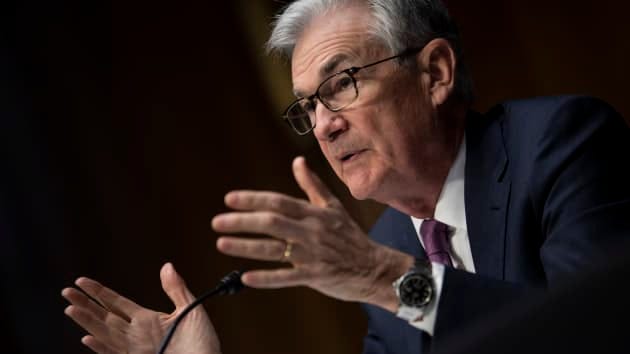As expected the Fed raised rates by 25 basis points and their actions also removed any pending uncertainty which helped the equity markets to move up, particularly the NASDAQ.
Let’s back up a bit. You remember a few months back Jim Bullard the St. Louis Fed President came out of the blue and announced that the Fed should raise rates even by 50 or 75 basis points at their next meeting. Markets reacted violently to that statement, especially the growth stocks. Bullard is a voting member at the FOMC and his comments mean something. But his comments didn’t happen without the knowledge of the Fed. This is how the Fed prepares the market for an important policy change. They will want to hit the market hard with the bad news and see how the market reacts.
Guess what, at the FOMC meeting yesterday, Bullard was the lone member who wanted a 50 bps change and all the other 8 members were unanimous in their decision for a 25 point hike. So there was really no division among the policymakers. Expect for Bullard, no other Fed Presidents made that many public statements too.
The Fed has a dual mandate of pushing for growth and controlling inflation. It is a very tricky responsibility to balance it. From their many past mistakes, they have really mastered how they should control the narrative. Remember all the major investment banks came out to announce at various stages that the Fed will raise rates from 5 to 7 times this year.
I strongly believe all this happens with the knowledge of the Fed. When the banks are in trouble it is the Fed that comes to bail them out. So they are here to help the Fed out as well. So this is all an agreed game to manage the markets.
The Fed Chairman announced a few weeks back that he favors 25 bps and now at the FOMC he announced the Fed may even hike up to 8 times going one above the highest hike announced by an investment bank.
There are only another six FOMC meetings for the rest of the year but that doesn’t mean the Fed cannot hike rates in between in an emergency. Don’t think that is going to happen. The real aim is to take out the surprise element that can cause the markets to be volatile, especially on the downside.
Let’s move on. With inflation so high and real interest rates in a hole of nearly 8%, why do you think the Fed is not aggressive in raising rates? I have a theory. It is more likely the Fed wanted to keep its own interest payments on the government’s massive debt (about $88 trillion) at the lowest level for as long as possible.
Powell is trying to be as smooth and soothing as possible to manage a volatile market. Eventually, the US market is either going to see lower growth with perhaps lower inflation or higher inflation with a bit more growth. After his ‘transitory’ debacle, Powell is much more careful with his choice of words. In his post-rate hike press conference, he acknowledged higher inflation could begin to come down in the second half of this year but he still expects inflation to be high.
This is the first time since 1970 that real interest rates have been negative (nominal rates minus inflation) and it turned negative in 2020. Inflation could fall by half and the Fed could raise rates another five times and real rates could still be negative.
When people finally realize that inflation is going to be sticky there will be a scramble to adjust their portfolios. Therefore it is very important that participants stick with good revenue-making cash-rich companies with hardly any debt. There can be movements to gold as well. In the 1970s precious metals soared more than 500% from the end of 1975 to their peak in January 1980 when real rates went negative. We will also have to see if Bitcoin will prove its real mettle as a store of value.
Let’s sum it up for you: firstly, I don’t think we will have 6 or 8 hikes this year. The Fed always has a right to change their mind and they are very data-driven but there is more to think and write about China which should have a bigger impact on the global economy. More on that in my next report.
If you received value from this post, and you’d like to send some back, or if you’d like to signal to me to continue spending time on these types of explorations, feel free to buy me coffees (thank you!):
So, there we go. Thanks for reading Breezy Briefings. If you enjoyed this, I'd really appreciate it if you could take a second and tell a friend. Honestly. It makes such a big difference.
Forward this email. Recommend the newsletter. Share on Twitter, WhatsApp, Telegram, LinkedIn, Slack, wherever!
Join Breezy Briefings’ Official Telegram Channel: https://t.me/BreezyBriefings
Abraham George is a seasoned investment manager with more than 40 years of experience in trading & investment and multi-billion dollar portfolio management spanning diverse environments like banks (HSBC, ADCB), sovereign wealth fund (ADIA), a royal family office and a hedge fund. Currently, he is a co-founder of a new hedge fund where foreign citizens can invest in Indian growth stocks like Tanla operating in hyper-growth markets like CPaaS.



